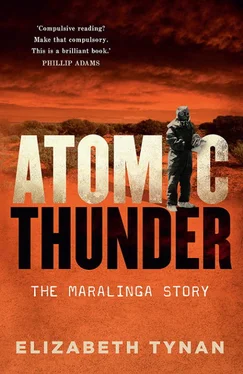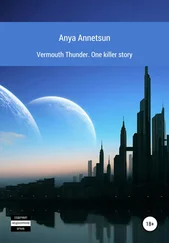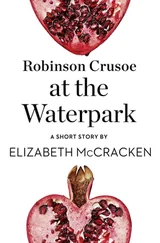Yet even the McClelland Royal Commission into the British atomic tests, motivated as it was by a passionate chair who sought to assign blame to those responsible for the tests, failed to find sufficient evidence of specific harm caused. While there is much anecdotal evidence, some of which has been presented in court, proving causality is extremely difficult. As scholar Paul Brown stated, ‘In a finding that continues to frustrate veterans, the Royal Commission concluded that illness, disease and abnormality cannot be unequivocally associated with radiation exposure well above the dose limit’.
The Royal Commission noted the fears that the tests had engendered in participants that stayed with them well into the future: ‘Operation of the “need to know” principle and the minimal amount of information given to participants has been a factor contributing to participants’ concerns and fears regarding what might have resulted from their experiences at Maralinga’.
In 2002, John Clarke QC was appointed by the prime minister John Howard to review veterans’ entitlements, including those of nuclear veterans. Clarke received 160 submissions on the British nuclear tests, and a chapter of the resulting report dealt exclusively with the veterans of the tests. Clarke called the nuclear tests ‘a unique, extraordinary event in Australia’s history’ and found that members of the armed services were exposed to dangers beyond those normally experienced in peacetime. As one of the submissions to the inquiry put it, ‘Australian servicemen were provided on loan to an experimental nuclear weapon test programme under the control of another country without prior scientific examination, independent advice or assessment of the potential dangers that could occur’. The report noted that these veterans were not at that point entitled to benefits under the Veterans’ Entitlements Act 1986 because their service occurred during peacetime before 7 December 1972 and recommended that the Act be extended to enable some limited coverage. The Act was amended in 2006 to enable compensation for veterans suffering one kind of cancer, malignant neoplasia. This did not go far enough in the eyes of the veterans, who had reported many other kinds of cancers, as well as issues around fertility, genetic harm to their children and mental health. Finally, in 2010 the Rudd Labor government amended the Act again to broaden the coverage of nuclear veterans. Various nuclear veterans’ associations continue to fight for recognition of the harm caused by the service, and in many cases the children of the service personnel fight too.
Tens of thousands of service personnel were based at Maralinga, flew aircraft to and from the sites or were present at the other sites during the test series. Their stories have been told in various ways over the years, beginning with a remarkable series of articles in the Adelaide Advertiser in 1980. Later, the academic Roger Cross joined with nuclear veteran Avon Hudson to co-write Beyond Belief: The British Bomb Tests; Australia’s Veterans Speak Out , which revealed shocking tales of what went on. In more recent times the journalist Frank Walker has meticulously documented the stories of veterans as part of his book Maralinga: The Chilling Exposé of our Secret Nuclear Shame and Betrayal of our Troops and Country .
The injury inflicted upon the Indigenous people cannot be properly measured. Robbing people of their ancestral homelands, subjecting them to forced removal and, later, exposure to the plutonium-laden dust and debris is not something that can be forgiven. Maralinga Tours, a successful tourist venture wholly owned by the traditional owners, began in 2014. The venture became possible when unrestricted access to the final part of Maralinga land was finally granted to the Maralinga Tjarutja people. At that point, the traditional owners could come and go freely throughout the site, without permission from the Department of Defence. May this venture thrive and prosper, because of all the people harmed by Maralinga, the Indigenous people were the most powerless.
The toxic physical legacy of Maralinga can almost be summed up in one word: plutonium. When MARTAC reported in 2002 on the outcome of the operation to remove contamination from the area, co-funded by the British Government, it said, ‘Plutonium (Pu) was almost entirely the contaminant that determined the scope of the [Maralinga rehabilitation] program. It is acknowledged as a very radiotoxic element if taken into the body, particularly by inhalation’. Plutonium-239 has significant consequences for the environment. According to radiation expert Frank Barnaby, ‘To all intents and purposes, once [plutonium-239] is in the environment, it stays there permanently. Because of its radiotoxicity and long half-life the disposal of plutonium presents particularly difficult problems’. While many of the people associated with Maralinga tried to play down the risks of leaving plutonium on the open range over the years, their assurances ring hollow. This material is deadly, and even back then this was known. Why was leaving it there considered acceptable? None of the answers given over the years seems satisfactory.
Uncovering secret information is a theme throughout the saga of the British bomb. An interesting side note is provided by the whistleblower website WikiLeaks, which revealed the plans drawn up by William Penney for an atomic bomb design that became Blue Danube. It is worth tracking back a little to recall the early history of the saga. In 1947, Penney was asked by the GEN.163 Cabinet committee to head Basic High Explosive Research, which later became the AWRE. This research group was tasked with fulfilling the Attlee political ambition of turning the UK into a nuclear power. Penney drew upon his extensive knowledge of the design of nuclear weapons as part of the Manhattan Project, and particularly the Fat Man plutonium bomb that was dropped on Nagasaki, and started to sketch out a design. This remarkable document, titled simply ‘Plutonium Weapon – General Description’, included a sketch of how the weapon might be constructed, although without great technical or scientific detail. The report was declassified and made publicly available some years ago, but the UK Ministry of Supply suddenly withdrew it from public view in 2002 (along with many other files relating to the British nuclear tests in Australia retained by other government entities, particularly the Ministry of Defence). Wiki-Leaks, however, published the full report, including the drawing, on its website in March 2008, arguing that, even though it had been withdrawn from the UK Public Records Office, the file was in the public domain since no attempt had been made by the UK Government to track down the many copies circulating since it was first made public. The government took an interest in clamping down on its distribution only when WikiLeaks published it.
There followed a bizarre and archetypically British correspondence between WikiLeaks and the head of the UK Foreign and Commonwealth Office Counter Proliferation Department, Regional Issues. Blue Danube had been superseded decades earlier and was no longer part of the British nuclear armoury. The office head said, ‘I have had an initial assessment from our experts. They are extremely concerned by the drawing you have posted on your website and assess it is of serious proliferation concern, and possibly terrorism concern’. WikiLeaks ‘did not find [the concerns] credible’ and refused to remove the document. It remains there at the time of writing.
However, the emails between Jay Lim at WikiLeaks and Isabelle McRae at the Foreign and Commonwealth Office showed something of a half-hearted attempt at information control by the British authorities, perhaps in contrast to the era of the nuclear test series in Australia. McRae responded to Lim’s initial refusal to remove the material by saying:
Читать дальше












